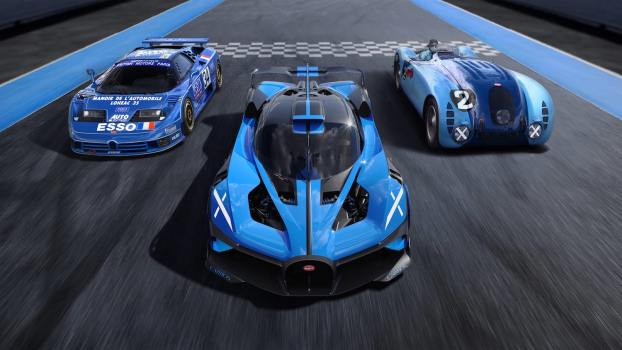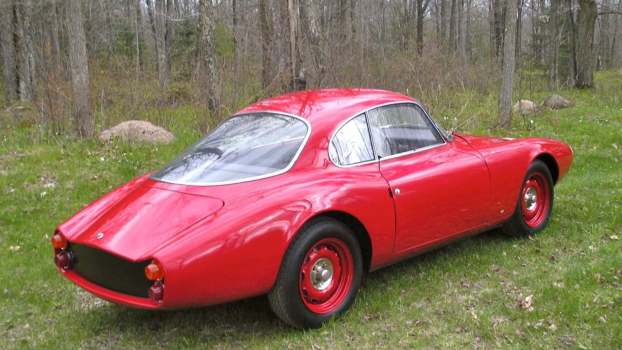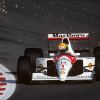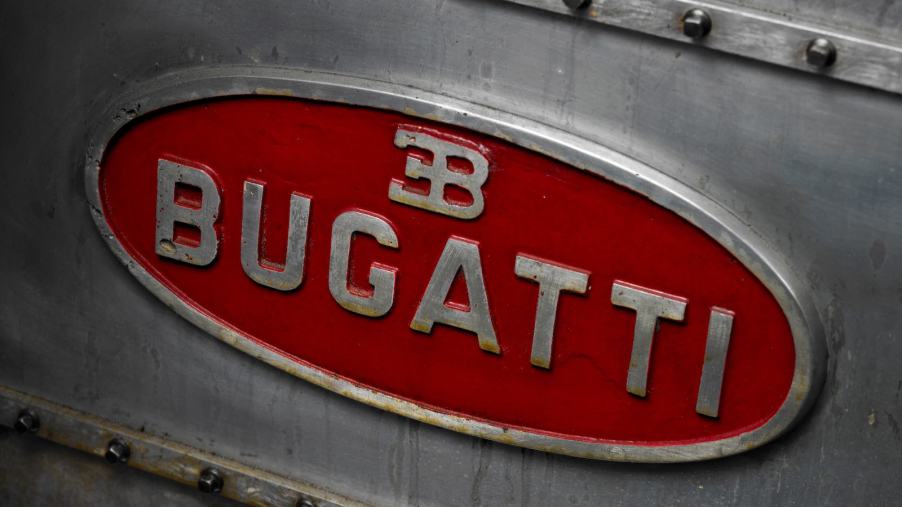
Yup, Bugatti Once Built a Dually With 4 Rear Tires
There ain’t no flex quite like a vintage Bugattis. But even among those rare collectors cars, one is especially notable. That’s because this 1939 Type 59 came from the factory with four rear tires. This Bugatti race car is a dually. Why? Traction.
Italian-born Ettore Bugatti founded his car company in France in 1909. Back then many race cars were bobbed trucks or just airplane engines crammed into normal cars. Bugatti’s first innovation was “building lightness into the car” and its nimble Type 35 remained competitive for decades. Obviously, WWII put a kibosh on French racing. One of the final race cars Ettore’s era of Bugatti built was a 1938 Type 59 designed for a hill climb.
Bugatti launched the new Type 59 in 1934. This beast had a supercharged straight-eight engine. Its frame was channeled so the engine could sit even lower than in competitor’s cars. To reduce the weight further, Ettore had even drilled holes up and down its frame.
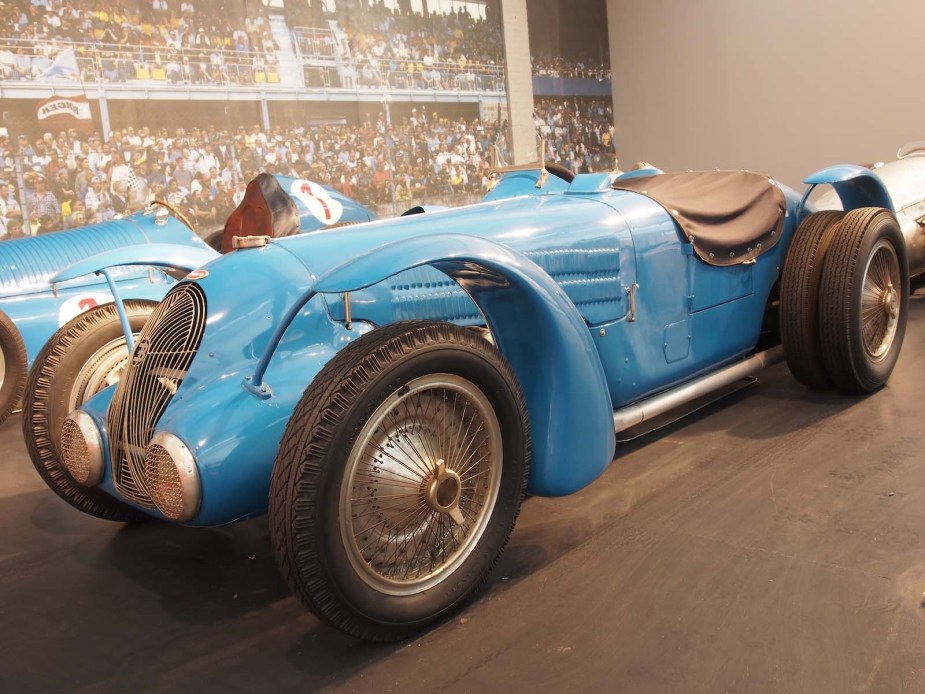
By the 1930s, Bugatti was coming up against some serious limitations with the technology available. Ettore actually pioneered allow rims, a rear transaxle, and even lightweight magnesium construction (though the Type 59 wouldn’t use any of these technologies). But one thing the Factory Works racing team always struggled with was 1930s tires. They were narrow and didn’t offer even a fraction of the grip of modern tires.
Bugatti began to prepare a race car for driver Jean-Pierre Wimile to run in the 1939 hill climb season, including at the La Turbie Hill Climb and the Prescott Hill Climb. The car is sometimes listed as a 1938, other times as a 1939. But its official classification is Type 59/50B, its unique chassis code is 50180.
This Type 59 had a manual four-speed transmission and its 4.7-liter supercharged I8 engine had been designed in hopes of 500 horsepower. For a car that weighted less than 2,000 pounds, that’s a lot of ponies. But in a hill climb it would need all of them. And Bugatti Works struggled putting all that power down. So it extended the rear wheel splines and mounted four rear tires.
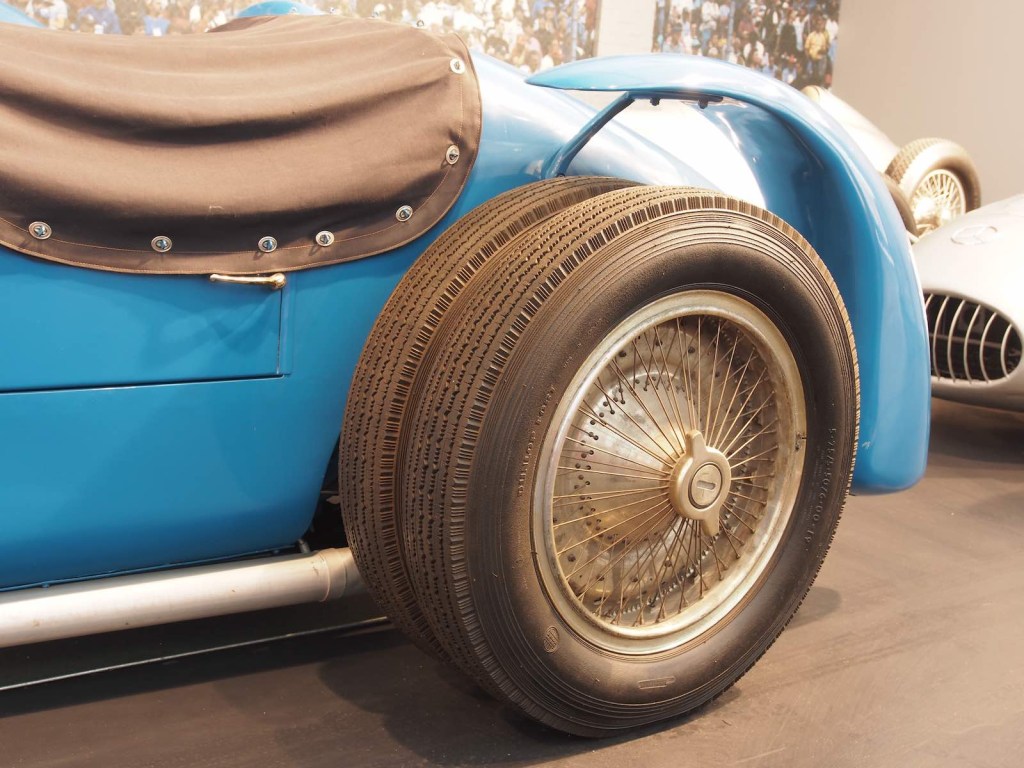
1939 was not the first time Bugatti did this. And it was not the only brand to experiment with extra tires. But other “dually” race cars usually came back to the factory and got retrofitted to regular cars as they were prepped to sell on the private market.
By 1939, it was fairly common for rich enthusiasts to buy Bugattis with racing history. The company also made regular road cars. At La Turbie, Wimille finished first in the car’s class and second overall. The 1939 Prescott Hill Climb was the first of its kind organized by the Bugatti Owners’ Club. Wimille absolutely dominated that event.
Apparently, Ettore realized he might have gotten a bit ahead of himself and vowed to design a lighter new car for the 1940 race. Who knows what innovations a new era of Bugattis would have brought to racing. But as war broke out, that race never happened. The dually grand prix car would be the final race car Ettore ever built.
Next, read about the Bugatti so rare even Jay Leno can’t buy one, or watch a Bugatti Type 59 put through its paces in the video below:
